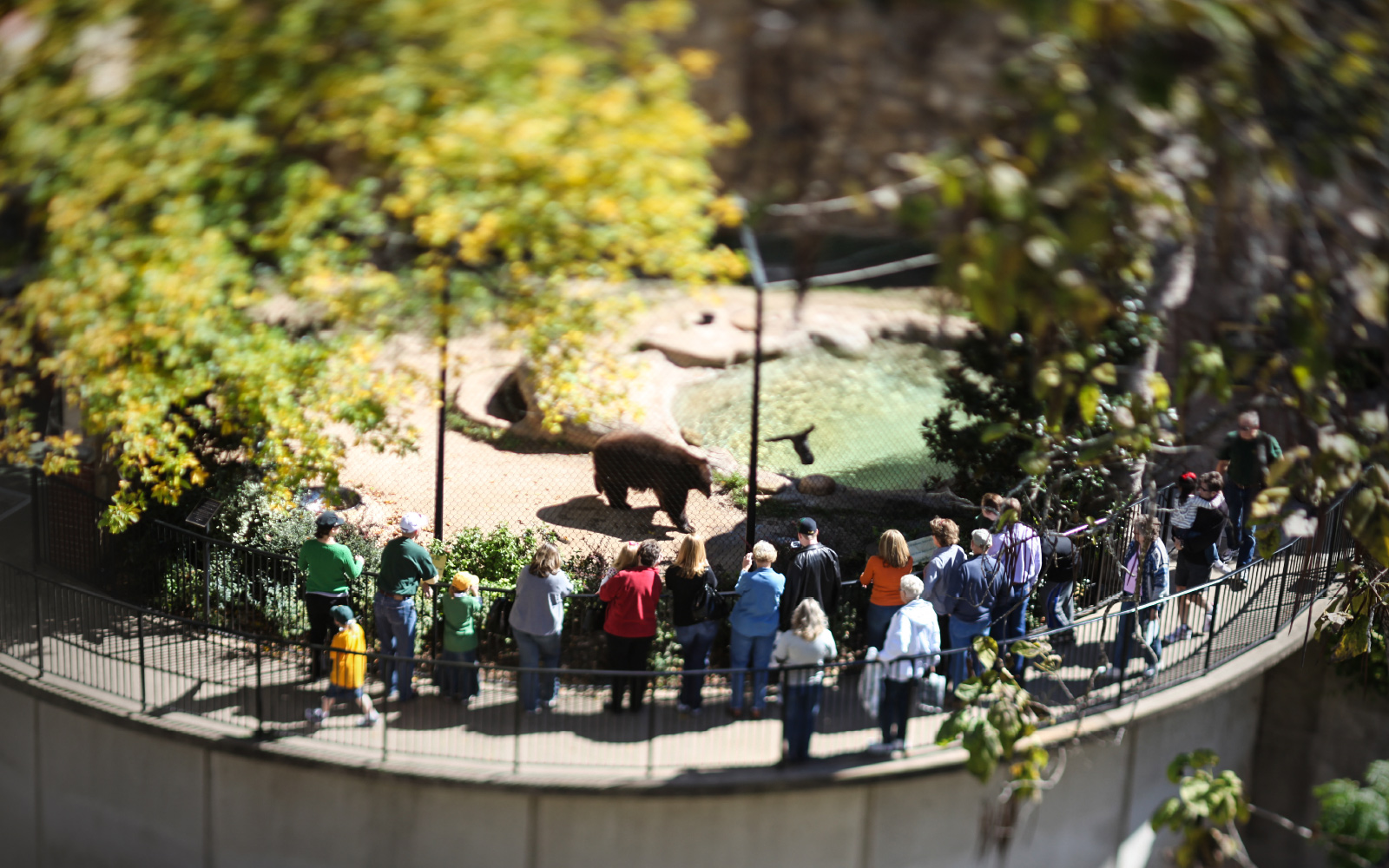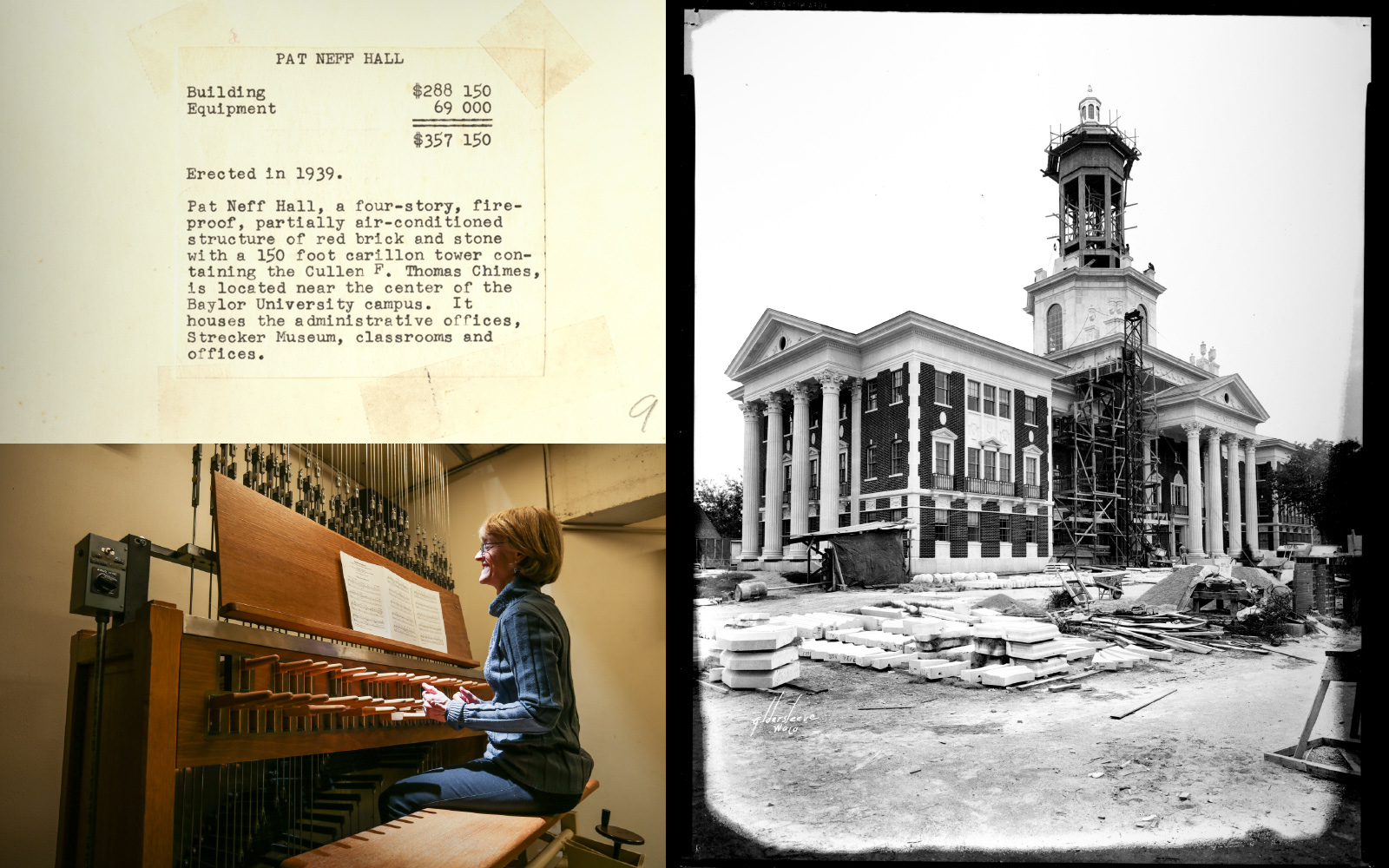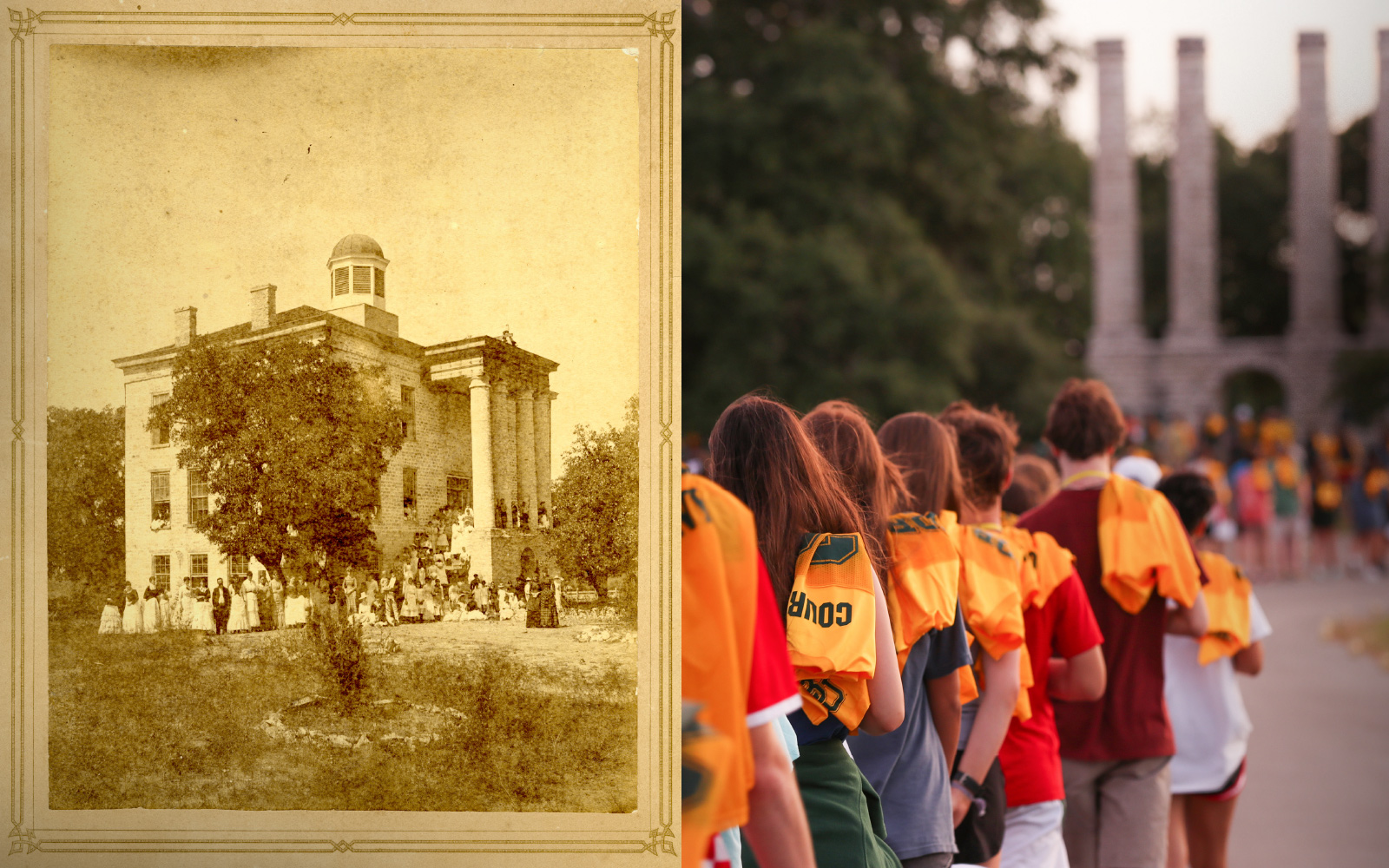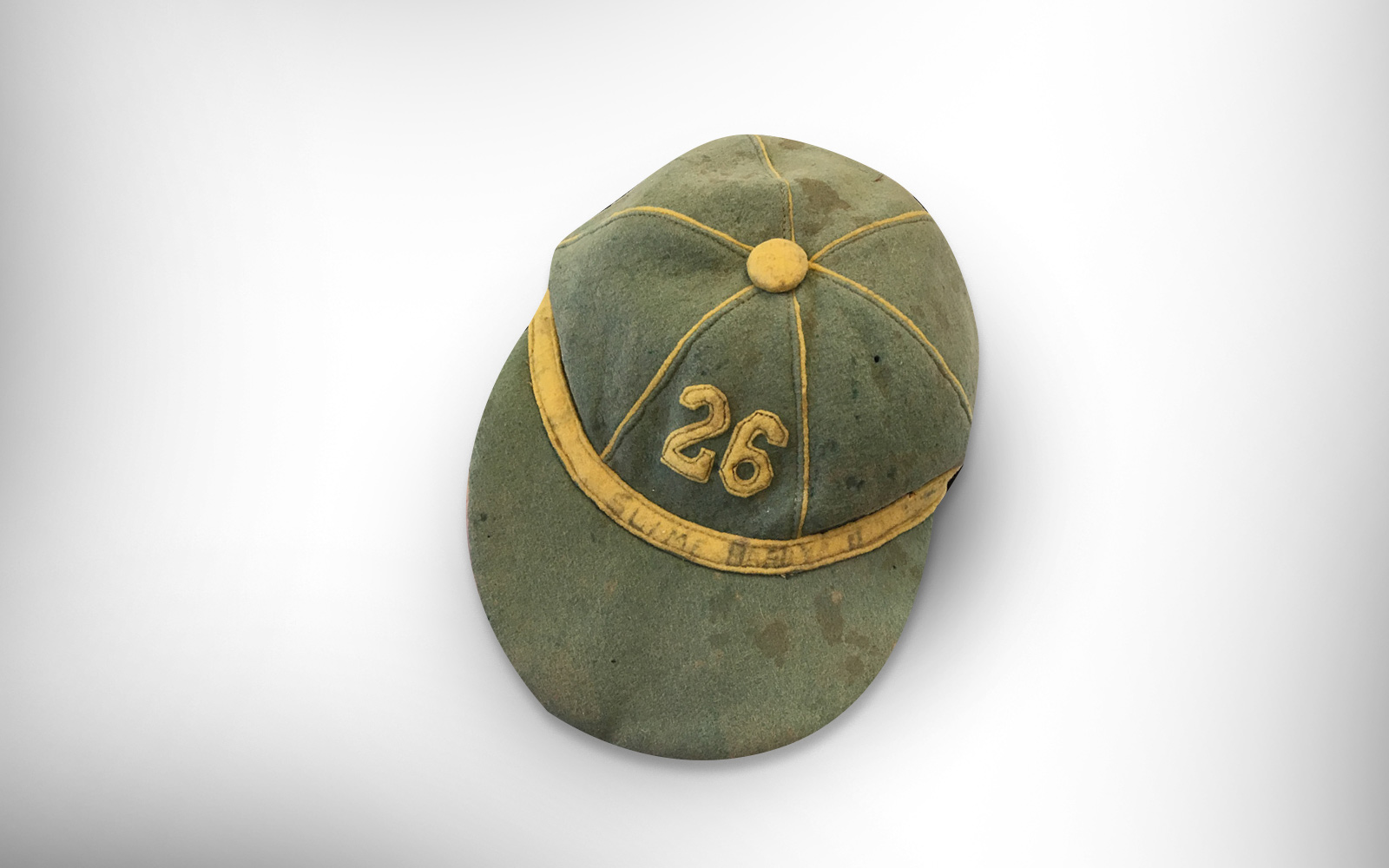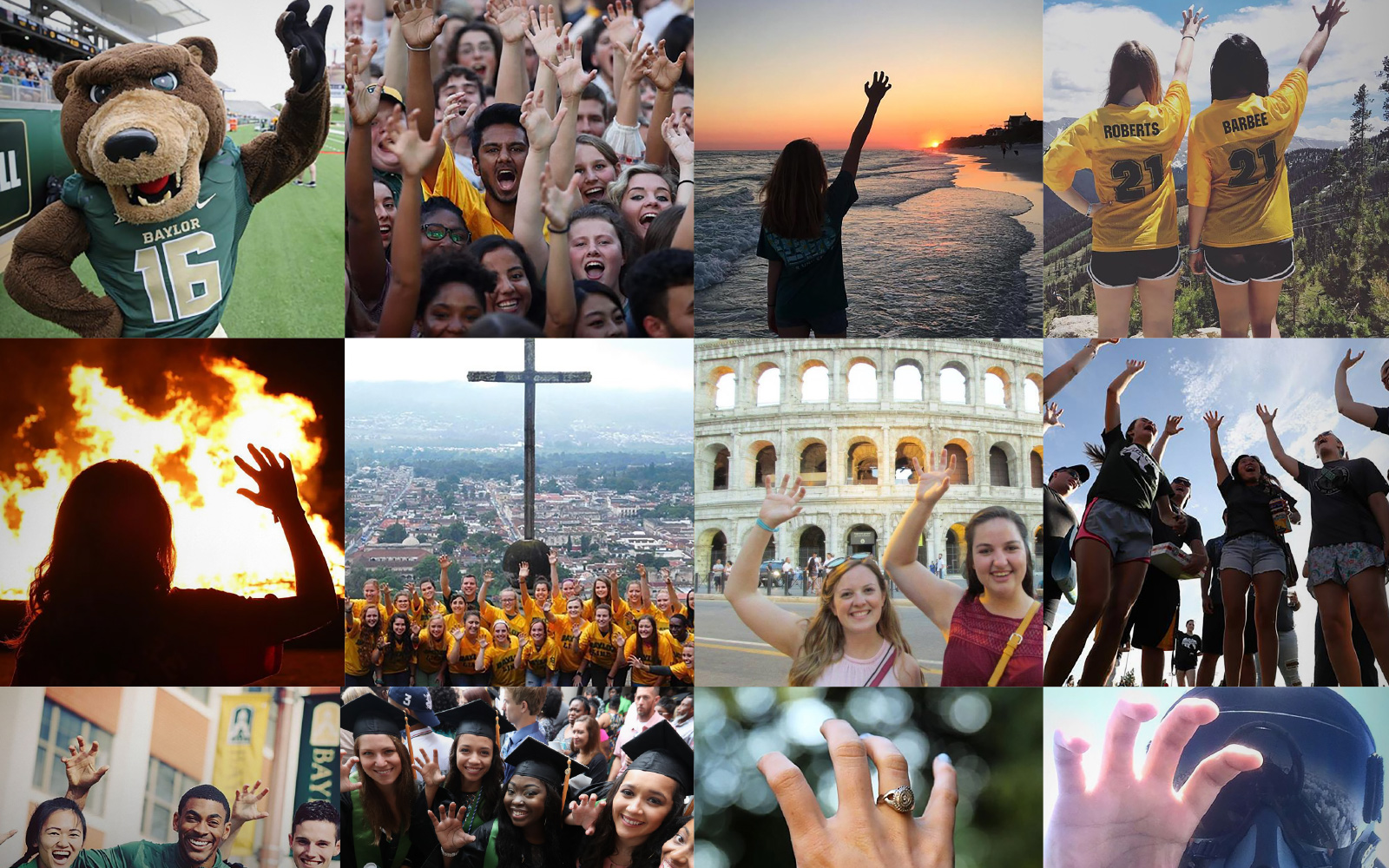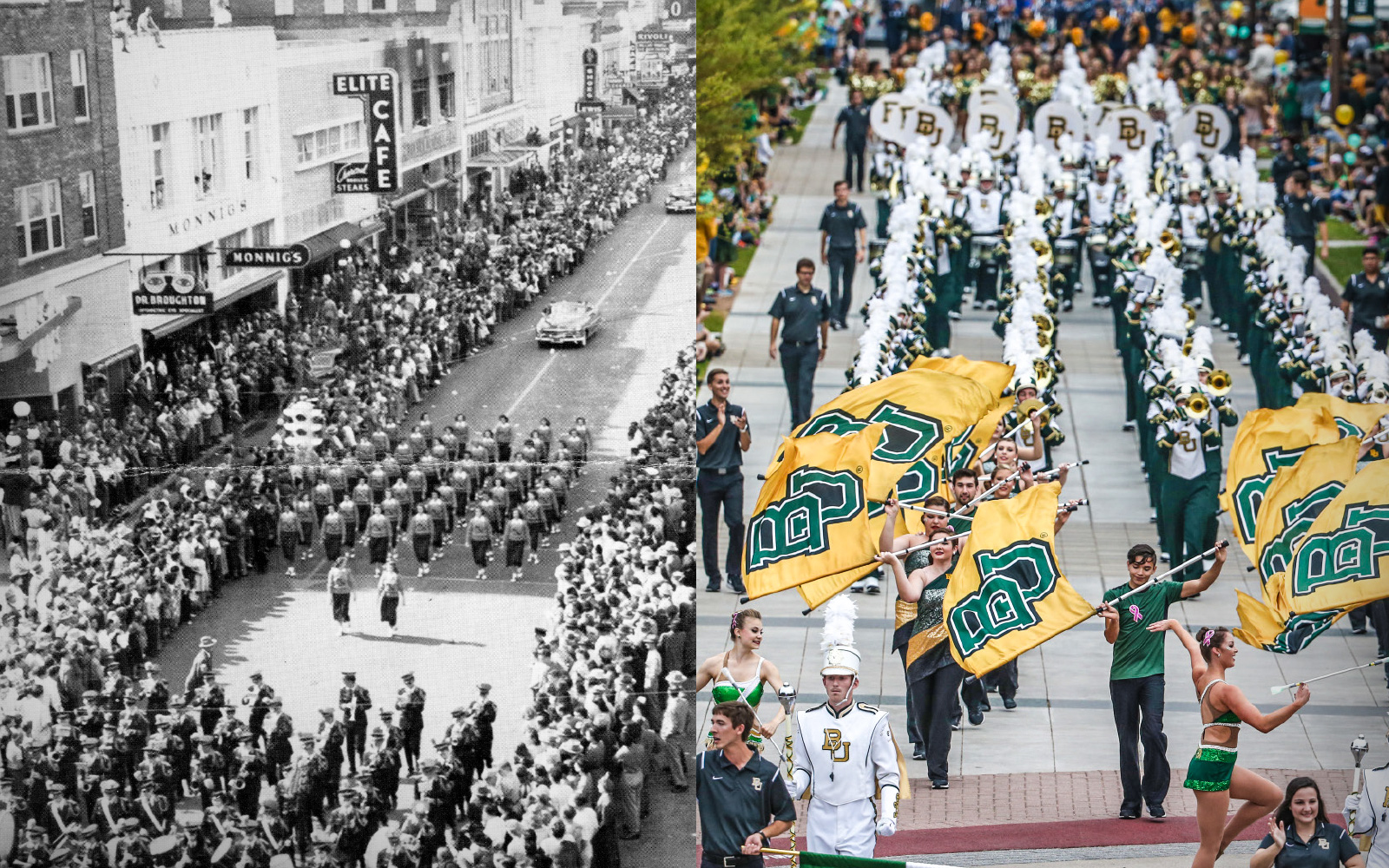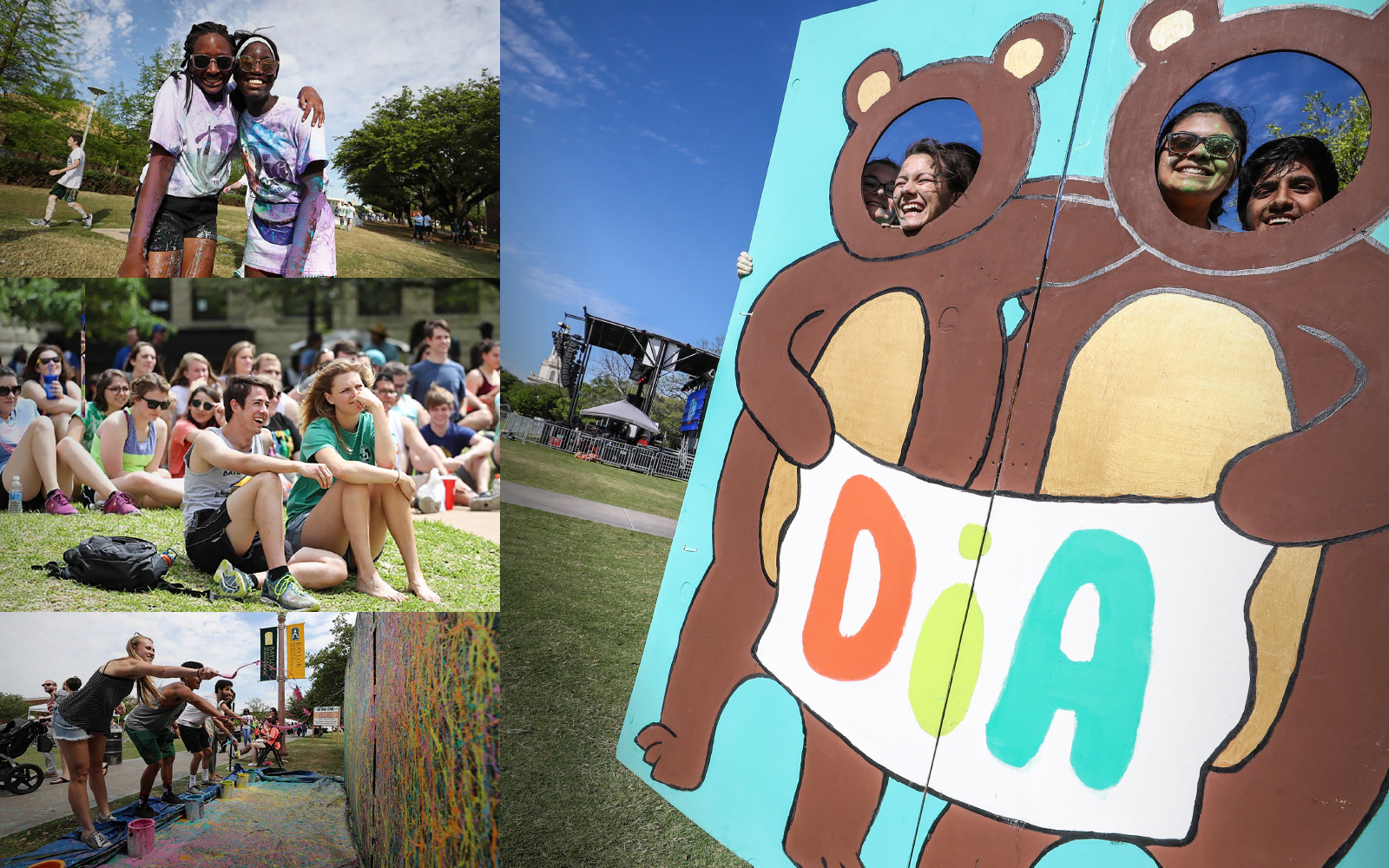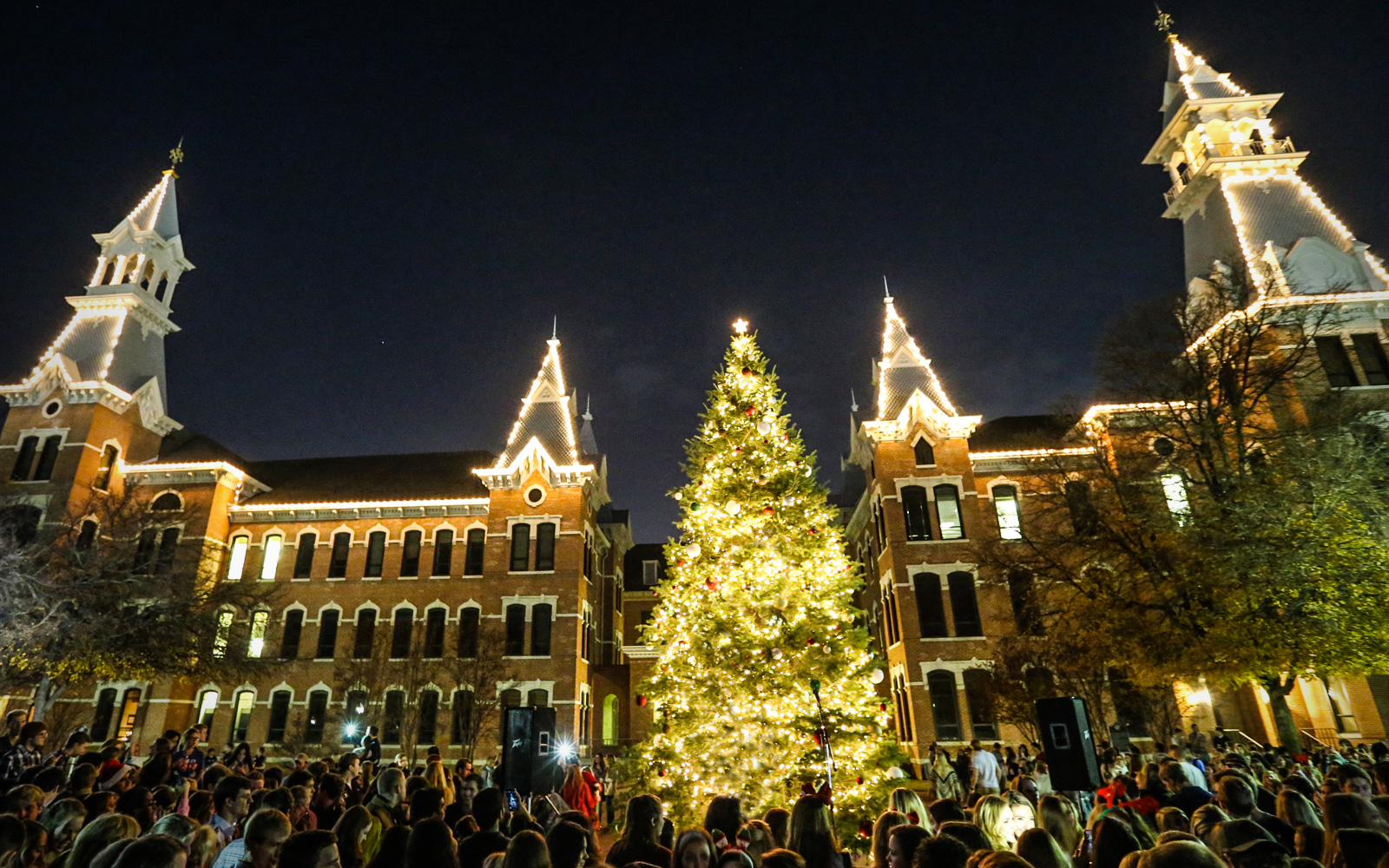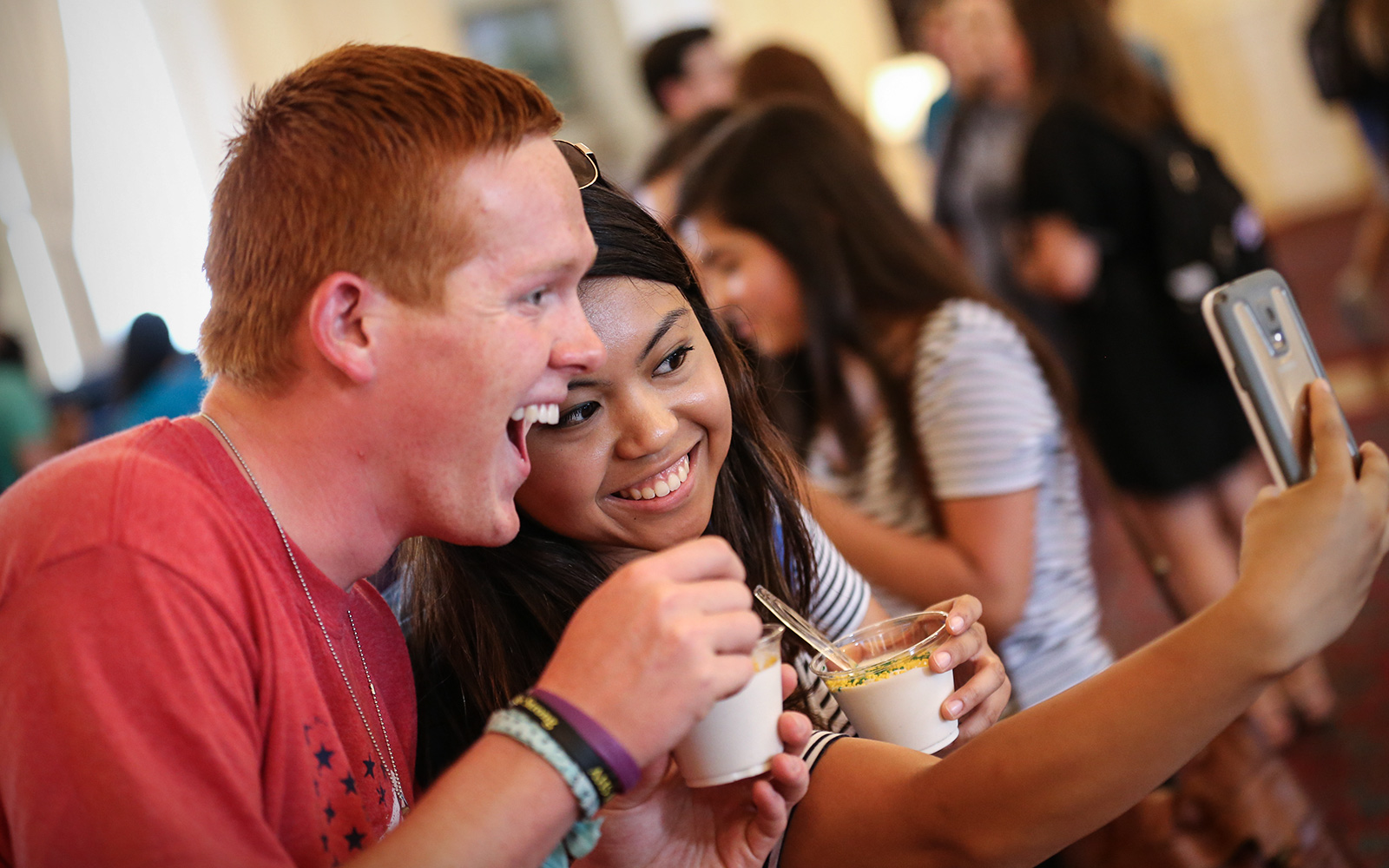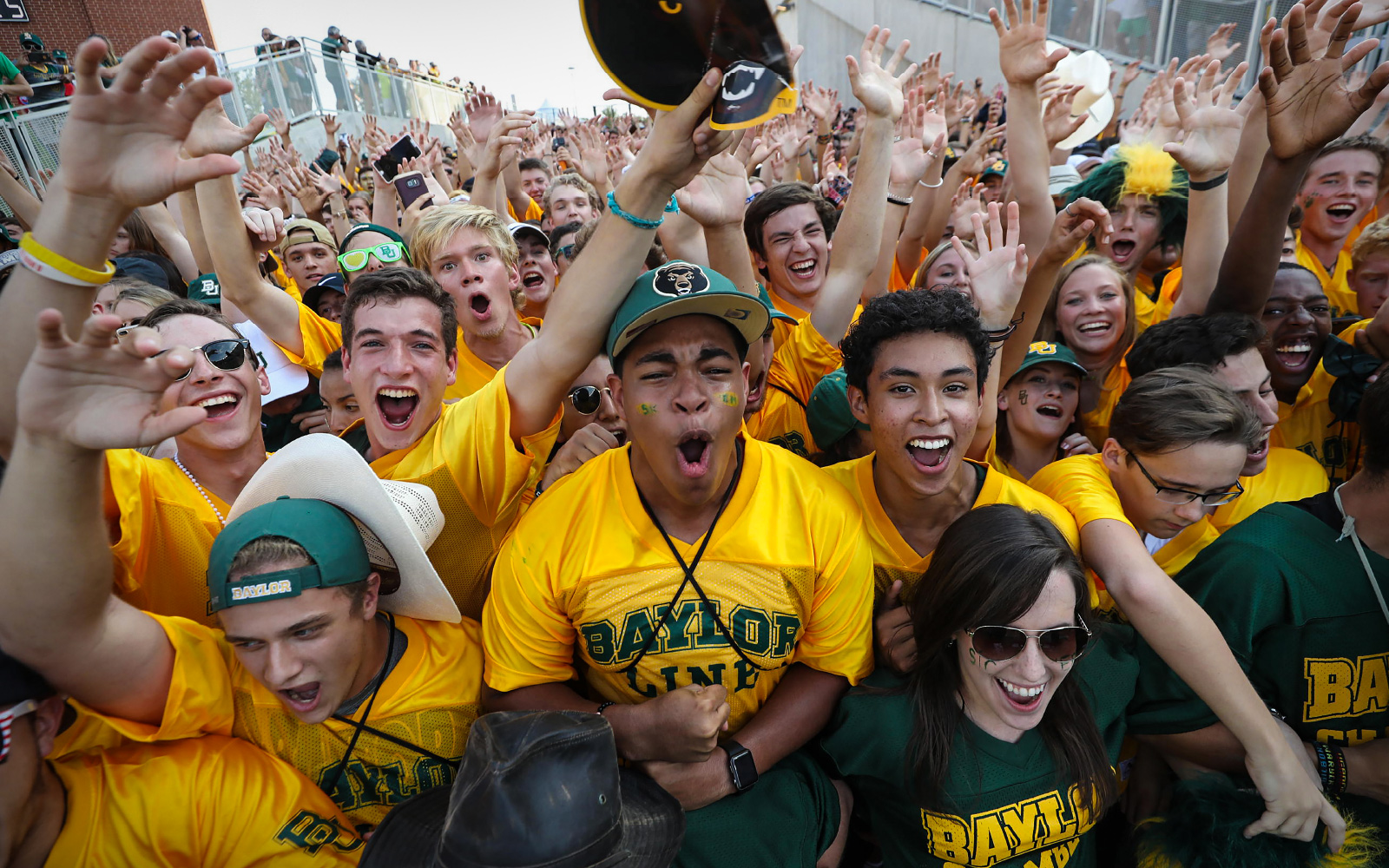Icons and Traditions
A look at 11 icons and traditions that have come to symbolize, celebrate and unite generations of Baylor students and alumni.
Judge R. E. B. Baylor
The University’s namesake, Judge Robert Emmett Bledsoe Baylor (1793-1873), was an ordained Baptist minister, district judge and legislator born in Kentucky. He moved to Texas at age 46 and held some of the top judicial positions in the Republic of Texas. His great stature and reputation inspired the use of his name—although reluctantly by him—for the new Baptist institution of higher education he helped to found in 1845. Today, many students know Judge Baylor as the man memorialized in the large bronze statue on Founders Mall, facing Waco Hall. His statue, created by the celebrated artisan Pompeo Coppini, was dedicated on Feb. 1, 1939, as part of the Texas Centennial celebration and the University’s Founders Day commemoration. Today, it is a favorite campus photo spot for campus visitors, students and alumni.
Bear Mascot
Baylor University did not have an official mascot during its first 68 years. When Baylor athletics teams competed, the players were sometimes referred to as “the Baptists,” “the Bulldogs” or other nicknames. That changed in 1914, when former student George Rosborough offered a $5 gold piece to the winner of a contest to choose a mascot name. Some traditional examples were proposed (buffalo) as well as some quirky ones (bookworm), but the submission by Miss Doyle Thrailkill—the bear—won handily. Ted, Baylor’s first live bear mascot, arrived in 1917 as a gift from soldiers at Waco’s Camp MacArthur. He was followed by a number of beloved successors, including the legendary Joe College. The mid-1970s saw the tradition arise to use the prefix “Judge”—a tribute to Judge R.E.B. Baylor, University founder—for the formal names of all live mascots. Current live mascots Joy and Lady live in the Bill and Eva Williams Bear Habitat on Waco Creek. Baylor’s human-powered bear mascot, Bruiser, was named in a student contest in 1997.
Pat Neff/McLane Carillon
Baylor’s administration building is named for the first of the eight Baylor presidents to office there—Pat Morris Neff, a former Texas governor and a Baylor graduate. Since its opening in 1939, the building has at one time housed almost every university administrative office, as well as classrooms and academic offices. It also provided temporary homes for The Texas Collection and Baylor’s museum, then called Strecker Museum. The green lights that illuminate the building’s dome were added in 1978, and the tower’s silver stainless steel gained a Baylor golden shine in the 1990s. The building’s original set of electric chimes, donated by alumnus Cullen Thomas, lasted from 1939 until 1985. A gift from Regent emeritus Drayton McLane Jr. and his family provided the 48-bell McLane Carillon in 1988 to once again fill the campus air with beautiful music.
Independence, Texas
Pioneer Texas Baptists rallied to create their university as their independent republic prepared to become one of the United States. After Baylor University was chartered by the Republic of Texas on Feb. 1, 1845, four Texas towns bid to be the new school’s home—Huntsville, Travis, Shannon’s Prairie and Independence. The University trustees opted for the centrally located Independence. The beauty of the land was offset by the University’s almost constant struggles during the 41 years it was at Independence, from economic hard times to administrative power struggles to the railroad bypassing the town. Texas Baptist leaders decided to divide the University along gender lines, with the Baylor University men and associated faculty moving to Waco to merge with Waco University, also a Baptist institution of higher education, and continuing to operate as Baylor University. The Baylor women’s department separated to become the Baylor Female College, eventually moved to Belton and is known as the University of Mary Hardin-Baylor.
Slime Cap
Baylor students began wearing caps with the year of their anticipated graduation embroidered on them as early as the turn of the 20th century. By the 1940s, the nickname "Slime" was popular for Baylor freshmen. Entering students were required to wear their cap as a symbol of their status, usually with their name and hometown on the bill, which was turned up for others to see. Today, freshmen receive their slime caps at Baylor Line Camp or in the Traditions Box at Move-In Day, and, while no longer required to wear them, new students proudly display their small green beanies featuring their year of expected graduation.
Sic 'em, Bears
In 1960, Baylor senior yell leader Bobby Schrade was responsible for introducing the Bear Claw hand signal and the Sic ’em, Bears! yell to football fans. Schrade and his fellow yell leaders had been looking for a cheer that would be unique to Baylor. “We felt in order to compete and not play second fiddle to anyone that we wanted to have something significant to Baylor that fans could rally around,” he said. Neither Sic ’em, Bears! nor the Bear Claw were instant hits with fans, but both items were solid traditions by 1974, when coach Grant Teaff led the Bears to their first conference football championship in 50 years. Both elements spread beyond athletic events to Baylor gatherings and symbolize pride in the University.
Homecoming
In 1909, Baylor President Samuel Palmer Brooks and the committee planning the University’s inaugural Homecoming celebration issued an appeal to all alumni to “lay aside for a few days the usual cares of life” and return to campus “to renew former associations and friendships, and catch the Baylor spirit again.” The first Homecoming—now recognized by historians as likely the first collegiate homecoming in the country—brought in thousands of alumni on special trains. It featured an evening bonfire, a parade through downtown Waco that included the Baylor band and 60 decorated automobiles, and a 6-3 win over then-crosstown rival TCU in football. Baylor Homecoming has grown through the ensuing years to include class reunions and picnics, the annual Mass Meeting honoring Baylor’s Immortal Ten, Singspiration, Pigskin Revue with the crowning of the Homecoming Queen, a spirited football game against a Big 12 Conference opponent and, of course, a bonfire and arguably the largest college Homecoming parade in the nation.
Diadeloso
Diadeloso could be called Baylor’s spring play day that just won’t quit. It began May 11, 1932, as All University Day, with events such as sack races, a chariot race, a faculty-senior baseball game and a rolling pin throwing contest. The holiday then enjoyed a long run as May Day; during World War II, the name was briefly altered to the serious moniker of Physical Fitness Day. In 1966, Baylor students put an end to the name changes by voting to christen the spring play day Diadeloso (Day of the Bear). Modern versions have featured anything from student elections and tugs of war and other feats of strength to special attractions including concerts, attempts at setting some crazy world records, performances by hypnotists, rides on hot air balloons and camels (not at the same time), step shows and spirited sessions of Zumba and goat yoga.
Christmas on 5th Street
Baylor has celebrated Christmas in a variety of ways ever since classes began back in 1846, but the current tradition known as Christmas on Fifth Street began Nov. 30, 2001. The event from its beginning incorporated the lighting of the Kappa Omega Tau Christmas tree, a tradition on campus since 1965. Besides marveling at the large tree in the center of Burleson Quadrangle, visitors from across Central Texas wander a campus transformed by the glow from thousands of lights as both adults and children enjoy concerts, music from a handbell choir, a live nativity (usually with real camels), a children’s carnival, pictures with Santa Claus, horse-drawn carriage rides, a petting zoo, a holiday arts fair, caroling, cider and hot chocolate, as well as arts and crafts booth.
Dr Pepper Hour
Baylor’s best weekly mixer—where you’re likely to meet students, faculty and staff enjoying each other’s relaxed company—is Dr Pepper Hour. It began in 1952 as Coffee Hour, a chance for those on campus to take a short break and fellowship over refreshments. When soft drinks gained favor, the event’s name changed to Coke Hour. The name changed again in 1997, when it became known as Dr Pepper Hour. Each Tuesday afternoon during the fall and spring semesters, the Baylor Family gathers in the Barfield Drawing Room of the Bill Daniel Student Center and Clifton Robinson Tower and consumes the cool piéce de résistance—the legendary Dr Pepper float, made from a perfect blend of the Waco-born soft drink and vanilla ice cream.
Baylor Line
Ask an alumnus what the Baylor Line is, and depending on their age and campus history, they might reply a phrase in the school song or a satiric reference from bygone days when students had to wait through long lines at registration. But since 1970, the Baylor Line has become best known as the group of new students who dedicate their first year on campus to boosting the spirit and preserving the traditions of the Baylor Family. Members receive personalized green and gold Baylor Line jerseys during an emotional ceremony at Independence before the start of school. Prior to each home football game, the Line runs onto the field at McLane Stadium and creates a huge tunnel to welcome the football team. Members then sit together in a special section and cheer loudly for the Bears until game’s end—rain or shine, win or lose—and then sing That Good Old Baylor Line.
